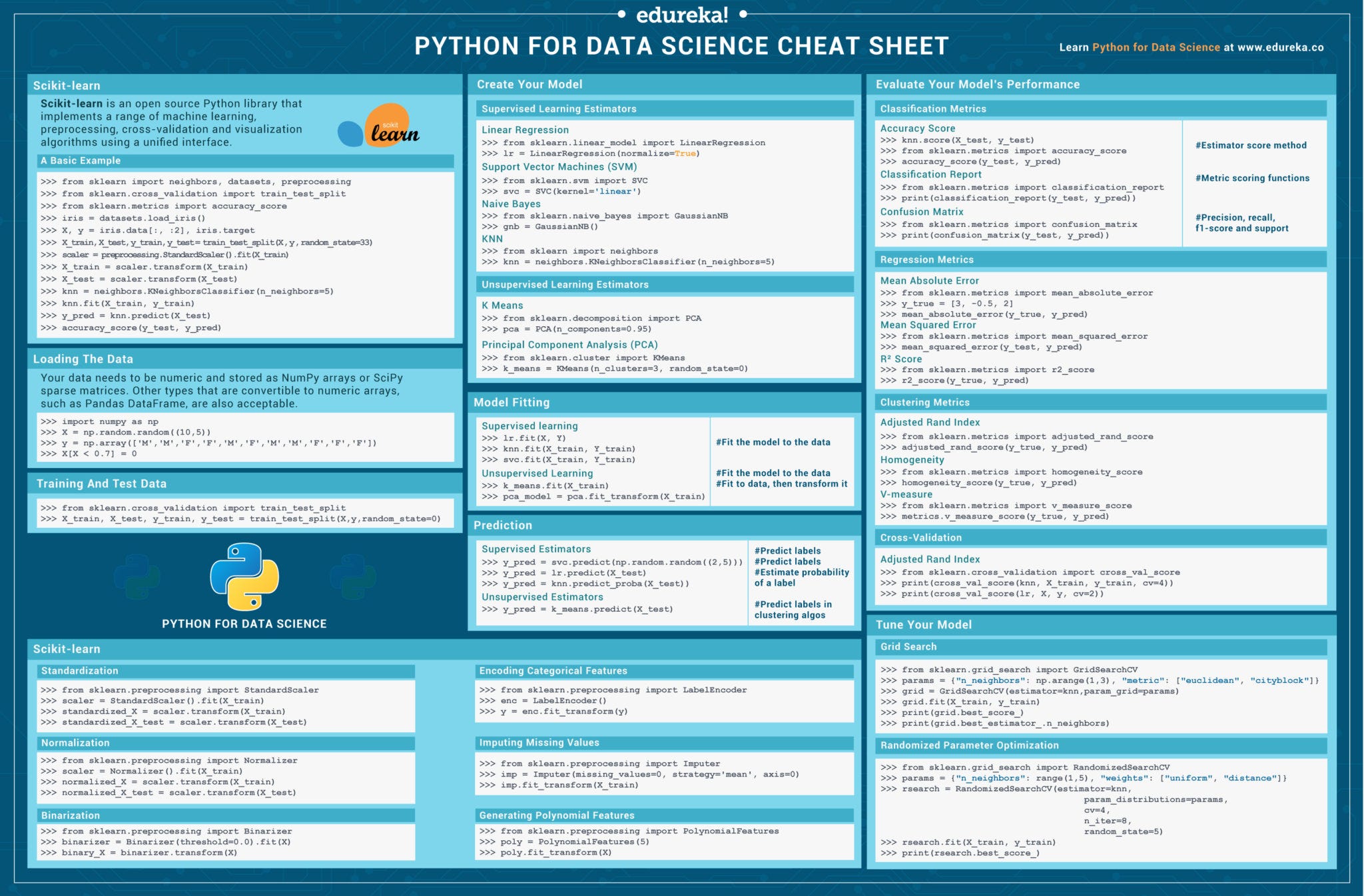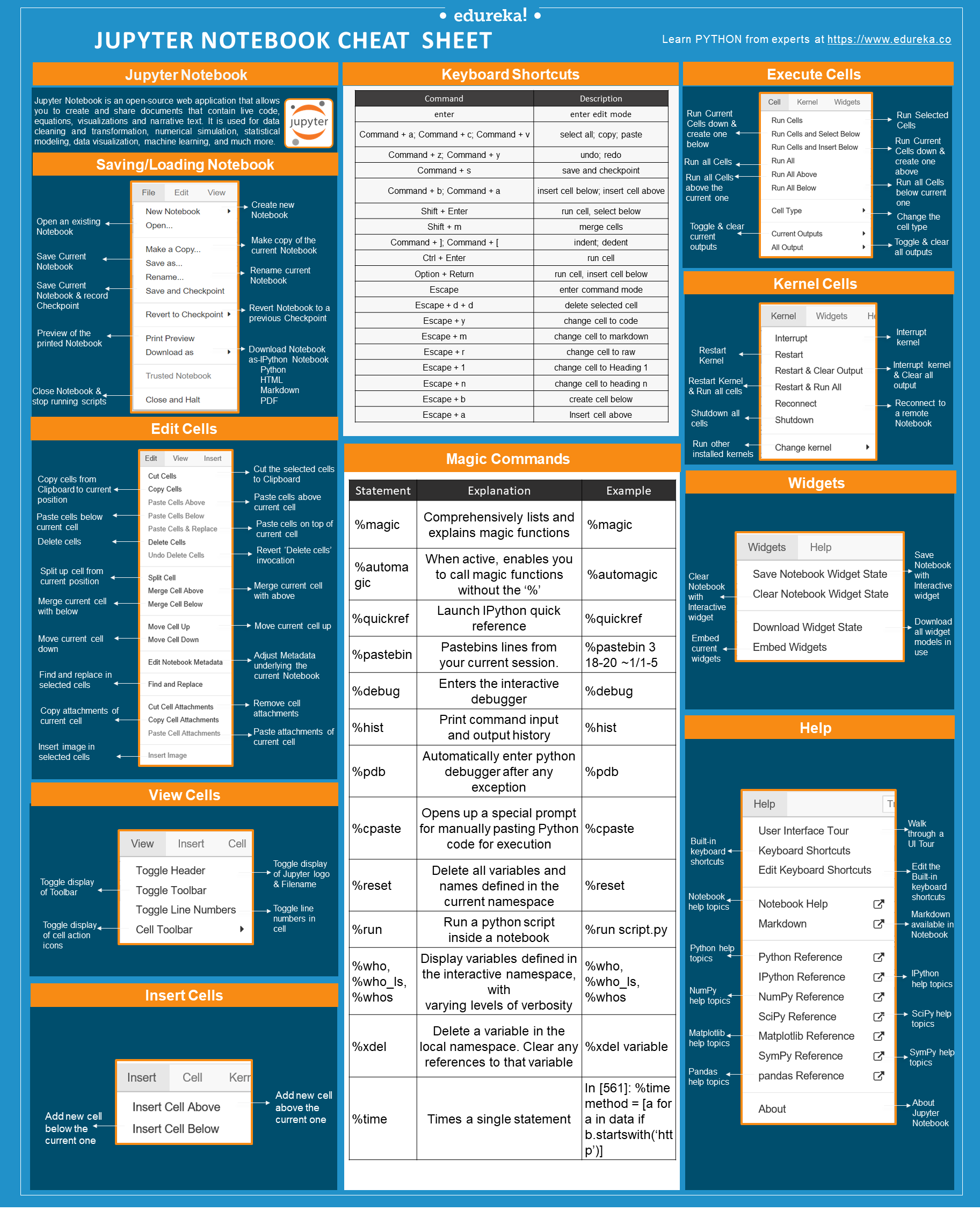This document is a quick cheat sheet showing how the PEP 484 typeannotation notation represents various common types in Python 3.
Python 3 Cheat Sheet. Free Bonus: Python Cheat Sheet. Get a Python Cheat Sheet (PDF) and learn the basics of Python 3, like working with data types, dictionaries. Welcome to Python Cheatsheet! ☕️ Anyone can forget how to make character classes for a regex, slice a list or do a for loop. This cheat sheet tries to provide a basic reference for beginner and advanced developers, lower the entry barrier for newcomers and help veterans refresh the old tricks.
Note


Technically many of the type annotations shown below are redundant,because mypy can derive them from the type of the expression. Somany of the examples have a dual purpose: show how to write theannotation, and show the inferred types.

Variables¶
Python 3.6 introduced a syntax for annotating variables in PEP 526and we use it in most examples.

Built-in types¶
Functions¶
Python 3 supports an annotation syntax for function declarations.
When you’re puzzled or when things are complicated¶
Python 3 Cheat Sheet 2020
Standard “duck types”¶
In typical Python code, many functions that can take a list or a dictas an argument only need their argument to be somehow “list-like” or“dict-like”. A specific meaning of “list-like” or “dict-like” (orsomething-else-like) is called a “duck type”, and several duck typesthat are common in idiomatic Python are standardized.
You can even make your own duck types using Protocols and structural subtyping.
Classes¶
Python 3 Cheat Sheet Laurent Pointal
Coroutines and asyncio¶
See Typing async/await for the full detail on typing coroutines and asynchronous code.
Miscellaneous¶
Free Python 3 Cheat Sheet
Decorators¶
Decorator functions can be expressed via generics. SeeDeclaring decorators for more details.
